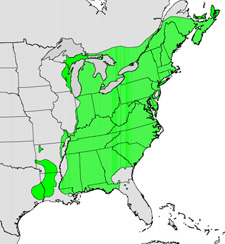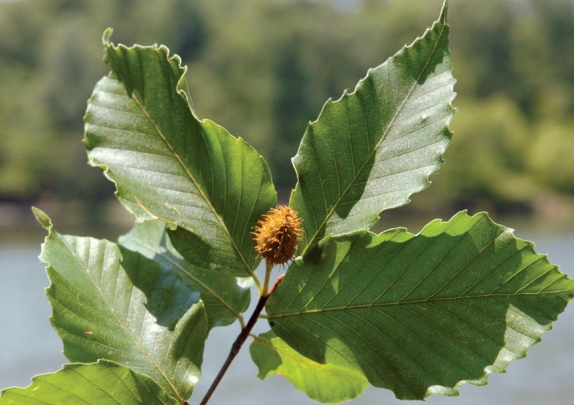Most white-tailed deer hunters east of the Mississippi recognize the importance of the fall acorn crop and how it directly impacts their hunting opportunities. The majority of QDMA members also understand the effect this cyclic food source has on the overall health of the deer herd. However, too often I see hunters and quality deer managers focus all of their attention on acorn production as the saving grace to their deer management and hunting success. When managing your property for deer and other wildlife, it’s essential to realize that often the best strategy is to create a diversity of vegetative communities, which results in a variety of cover and food sources. This allows room to buffer against times of famine, and it also makes your property attractive to a wide range of deer preferences; in other words, putting all your acorns in one basket can be detrimental in the long run.
American beech is another native, hard-mast source that deer will eat, and although this eastern, deciduous hardwood comes with some drawbacks, managing it correctly will offer a few benefits that you can’t get from oaks or other mast-producing trees.
American beech is a long-lived, slow-growing tree that can reach tall heights (60 to 100 feet), large diameters (3 to 4 feet) and grow massive, dense crowns; however, it is likely best known for its smooth, gray bark – a favorite for carving initials. Its leaves are simple, alternate, and oval with widely-spaced, serrated edges. The stiff, leathery leaves are also glossy and light green above, with a paler, yellow-green color below; eventually turning yellow-brown in fall and persisting late into winter. During the dormant season the buds of American beech are up to ¾-inch long and distinctly shaped like a narrow, pointed cigar. The fruits are shiny, triangular, brown nuts that are encased in a prickly bur and often found in pairs, on short stalks. The nuts are small but sweet and edible.

The range of American beech is shown in green in the map on the right.
American beech generally begins producing seed when 40 years old (or 5 to 8 inches in diameter) and by 60 years old (greater than 14 inches) can produce its largest quantities. Beech nuts average about 1,600 per pound and most drop to the ground when ripe; a few are carried by rodents but dispersal is limited.
Many, many birds and mammals feed on beech nuts, including ruffed grouse, turkeys, wood ducks, blue jays, white-breasted nuthatches, and various woodpeckers, as well as black bear, foxes, squirrels, chipmunks, mice, feral hogs and of course deer. This high level of attractiveness to a variety of wildlife is directly related to the fact that American beech nuts are high in both protein (20 percent dry matter) and fat (50 percent dry matter), something that acorns are not; with over 1/3 of its composition made up from carbohydrates. However, beech leaves and twigs are not preferred by white-tailed deer and are only browsed when there is very little available. American beech also provides nesting habitat for a variety of birds, and cavities within older trees provide dens for owls, squirrels and other mammals.
For management purposes, American beech mostly regenerates by root suckers and by stump sprouts. Unfortunately, because beech can regenerate aggressively and is slow-growing, in most uneven-aged forest management situations (typical small landowner timber management) it can gradually become the dominant species, progressively outcompeting more valuable species. To counter this, since beech is very shade tolerant, large open timber cuts can adversely affect beech production and will favor production of less shade-tolerant species, such as birches and oaks. On smaller properties, repeated clearcutting at short intervals may also reduce beech over time.
Did you know? Every issue of QDMA’s Quality Whitetails magazine contains profiles of two naturally occurring plant species that are important to deer and other wildlife, helping you learn to identify and encourage quality forage and cover for whitetails. This article is reprinted from a previous issue. To receive every issue of our magazine, become a QDMA member today!
